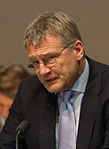Baden-Württemberg state election, 2016
|
|
|||||||||||||||||||||||||||||||||||||||||||||||||||||||||||||||||||||||||||||||||||||||||||||
|---|---|---|---|---|---|---|---|---|---|---|---|---|---|---|---|---|---|---|---|---|---|---|---|---|---|---|---|---|---|---|---|---|---|---|---|---|---|---|---|---|---|---|---|---|---|---|---|---|---|---|---|---|---|---|---|---|---|---|---|---|---|---|---|---|---|---|---|---|---|---|---|---|---|---|---|---|---|---|---|---|---|---|---|---|---|---|---|---|---|---|---|---|---|
|
|||||||||||||||||||||||||||||||||||||||||||||||||||||||||||||||||||||||||||||||||||||||||||||
|
All 139 seats in the Landtag of Baden-Württemberg 70 seats needed for a majority |
|||||||||||||||||||||||||||||||||||||||||||||||||||||||||||||||||||||||||||||||||||||||||||||
|
|||||||||||||||||||||||||||||||||||||||||||||||||||||||||||||||||||||||||||||||||||||||||||||

|
|||||||||||||||||||||||||||||||||||||||||||||||||||||||||||||||||||||||||||||||||||||||||||||
|
|||||||||||||||||||||||||||||||||||||||||||||||||||||||||||||||||||||||||||||||||||||||||||||
The Baden-Württemberg state election 2016 was held on 13 March 2016 to elect members to Baden-Württemberg's State diet, the Landtag of Baden-Württemberg in Stuttgart. It was the 15th state election since the foundation of Baden-Württemberg in 1952. Going into the election, Winfried Kretschmann of Alliance '90/The Greens led a coalition government of his party with the Social Democrats. After the election, Kretschman was confirmed in May 2016 leading a coalition with the CDU, the first time the Greens have led such a coalition in Germany.
Like in all German states, elections in Baden-Württemberg follow the mixed member proportional representation. There are 70 constituency seats and at least 50 additional seats to be filled, making up a total of seats of at least 120. A higher number can be reached through overhang seats and additional seats to restore proportional representation. Unlike all other states, there are no party lists. Instead, the seats for a party which are not filled by constituency winners go to the party's remaining constituency candidates with the highest percentages of votes. The Sainte-Laguë method is used to calculate the seat allocation.
The Greens campaigned to keep Minister-President Winfried Kretschmann in office. Their central issues were energy, economics, and education. The CDU aimed to put an end to the green-red state government and usher in its own leading candidate Guido Wolf to head the state government. Themes in focus for the CDU were education policy, internal security, and the issue of infrastructure, including high-speed internet. The SPD, led by Nils Schmid, wanted to win more votes to continue the existing government coalition with The Greens. The SPD's campaign mainly focussed on "good jobs", educational equality, and more time for the family. The electoral goal of the FDP, led by Hans-Ulrich Rülke, was to repeat its entry into the state parliament and possibly be involved in a governing coalition. They promised better education, the strengthening of the local business, and improvement of mobility. The AfD party campaigned to be elected into the state parliament for the first time. Its leading candidate Jörg Meuthen saw migration policy as an important election issue, alongside education, security, and energy transition.
...
Wikipedia






